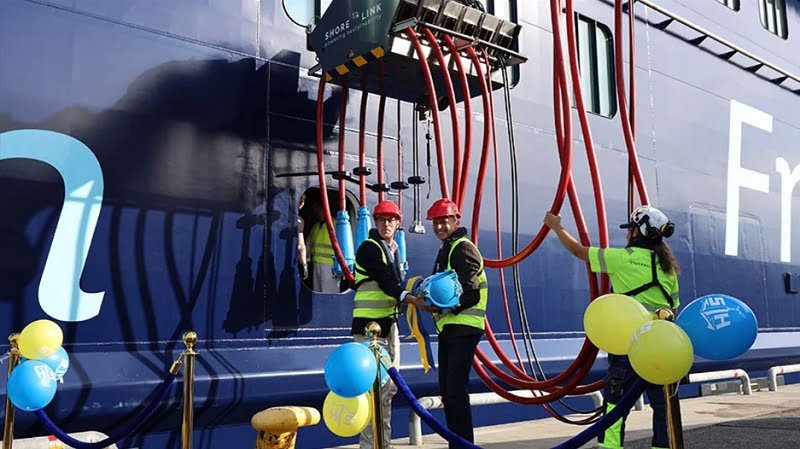On September 17, 2024, Ports of Stockholm inaugurated Sweden’s first onshore power supply (OPS) facility for international cruise ships, marking a significant milestone in the pursuit of sustainable shipping. The ceremony coincided with the arrival of TUI Cruises‘ newest vessel, Mein Schiff 7, which was the first to connect to the facility.
Jens Holm, Chair of the Board of Ports of Stockholm, emphasized the importance of this development for the Baltic Sea region, stating, “The inauguration of Sweden’s first onshore power connection for cruise ships is an important milestone in creating a premium destination for sustainable cruise traffic, both in Stockholm and throughout the Baltic Sea region. Cruise ships can now connect to electricity from the quayside, greatly reducing their impact on the environment.”
A Step Towards Sustainability
The newly constructed high-voltage facility meets international standards, enabling cruise ships to power their operations directly from the port, thus shutting down their auxiliary engines while docked. This transition is expected to significantly reduce air pollutants and noise levels, enhancing the overall experience for visitors and residents alike. With this new capability, at least 45 percent of cruise calls at Ports of Stockholm can now utilize the OPS.
Importantly, the electricity provided at the facility is sourced 100% from renewable resources, including wind and hydro power, further supporting the environmental goals of the port.
Incentives for Environmental Performance
To encourage sustainable practices among shipping customers, Ports of Stockholm has implemented a system of discounts on port fees for vessels that achieve high environmental performance ratings. These ratings are based on standards set by the Environmental Ship Index (ESI) and the Clean Shipping Index (CSI). The goal of these incentives is to lower emissions of carbon dioxide, nitrogen oxides, sulfur oxides, and particulate matter from ships.
Ports of Stockholm has also established facilities for receiving black and grey water from ships, with 85 percent of cruise vessels using these services. Most cruise ships are equipped with onboard sewage treatment plants and can store wastewater for extended periods before discharging it in compliant ports. Additionally, ships are mandated to dispose of solid waste at port facilities, with reduced fees for source-separated waste.
Collaborative Efforts in the Baltic Sea
Ports of Stockholm is not alone in its sustainability efforts. Together with three other Baltic Sea ports—Copenhagen/Malmö, Aarhus, and Helsinki—Ports of Stockholm has secured EU funding for investments in OPS. Some of these projects have also received backing from the Swedish Environmental Protection Agency’s Klimatklivet initiative.
Ports of Stockholm Future Goals
Looking ahead, Ports of Stockholm is committed to reducing greenhouse gas emissions and other air pollutants in collaboration with its shipping partners. The long-term vision aims for zero emissions from shipping operations in port areas by 2040. Expanding onshore power connections for ships is a pivotal measure in achieving this ambitious goal.

With the launch of this first Onshore Power Supply facility in Sweden, Ports of Stockholm is setting a precedent for sustainable practices in the maritime industry, reinforcing its status as a leading destination for eco-friendly cruise traffic.

